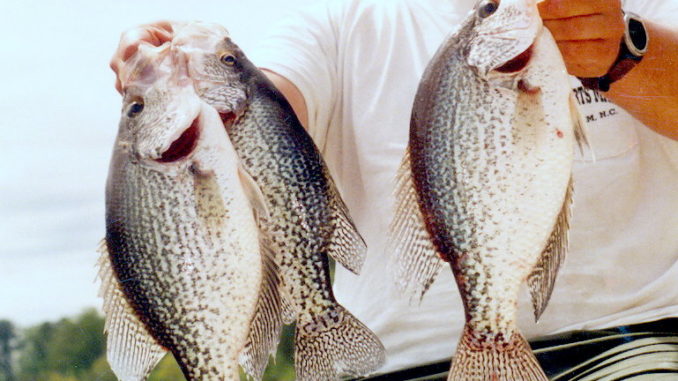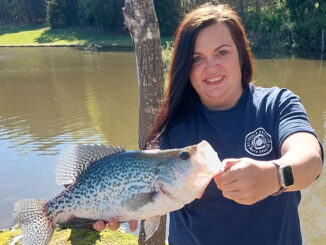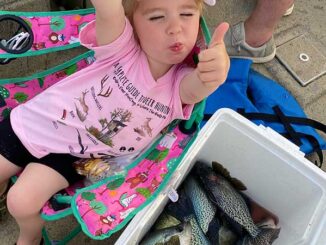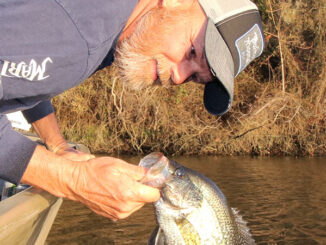
RALEIGH, N.C. – Catching a state-record freshwater fish has never been easier.
Just ask Johnston County angler John Davinson who recently broke the channel catfish state record after the N.C. Wildlife Resources Commission dropped the minimum weight requirement to 10 pounds.
Now the Commission has opened up the white crappie state record category after separating the general crappie state record into white and black crappie. The minimum weight limit to apply for the new white crappie state record is 1 pound, 8 ounces.
The current crappie record, broken in 1980 by Dean Dixon, was a 4-pound, 15-ounce black crappie caught from Asheboro City Lake #4. Corey Oakley, a Commission fisheries biologist, tracked down the mounted fish and verified that it was a black crappie.
Discerning the differences between a white crappie and a black crappie can be tricky. Aspiring record-breakers should count the spines on the dorsal (top) fin: The black crappie has seven to eight dorsal spines, while the white crappie has only five to six.
Another good way to tell the difference between these two closely related species is to look at the fish’s coloration-if the fish is marked with random spots, it’s most likely a black crappie. A white crappie is marked with five to 10 vertical bars along its sides.
Because the minimum weight requirement to apply for the white crappie state record is relatively modest, Kent Nelson, fisheries program manager for the Commission’s Division of Inland Fisheries, expects to see the record broken quickly, providing anglers know where to go and how to fish for this structure-loving species.
“Some of the best white crappie fishing is found in Piedmont reservoirs, rivers and large ponds,” Nelson said. “White crappie tolerate greater turbidity than black crappie, which are relatively more abundant in coastal rivers and streams. Crappie are often found near fallen trees, stumps, docks and thick stands of aquatic plants.”
Good places to fish for white crappie include Lake Brandt, High Rock Lake and Tuckertown Reservoir.
The best time to fish for white crappie is during their early spring spawning season, when they move into shallow areas along the shoreline. They can also be caught in sizeable numbers in the fall, when they move inshore again for a short period of time.
For live-bait anglers, Nelson recommends live minnows; anglers fishing with artificial lures should try small jigs and spinners.
To qualify for a state record, anglers must have caught the fish on a hook and line, must have the fish weighed on a certified scale witnessed by one observer, have the fish positively identified by a fisheries biologist from the Commission and submit an application with a full, side-view photo of the fish.
For a list of all freshwater fish state records in North Carolina or more information on the State Record Fish Program, visit the Commission’s Web site, www.ncwildlife.org.



